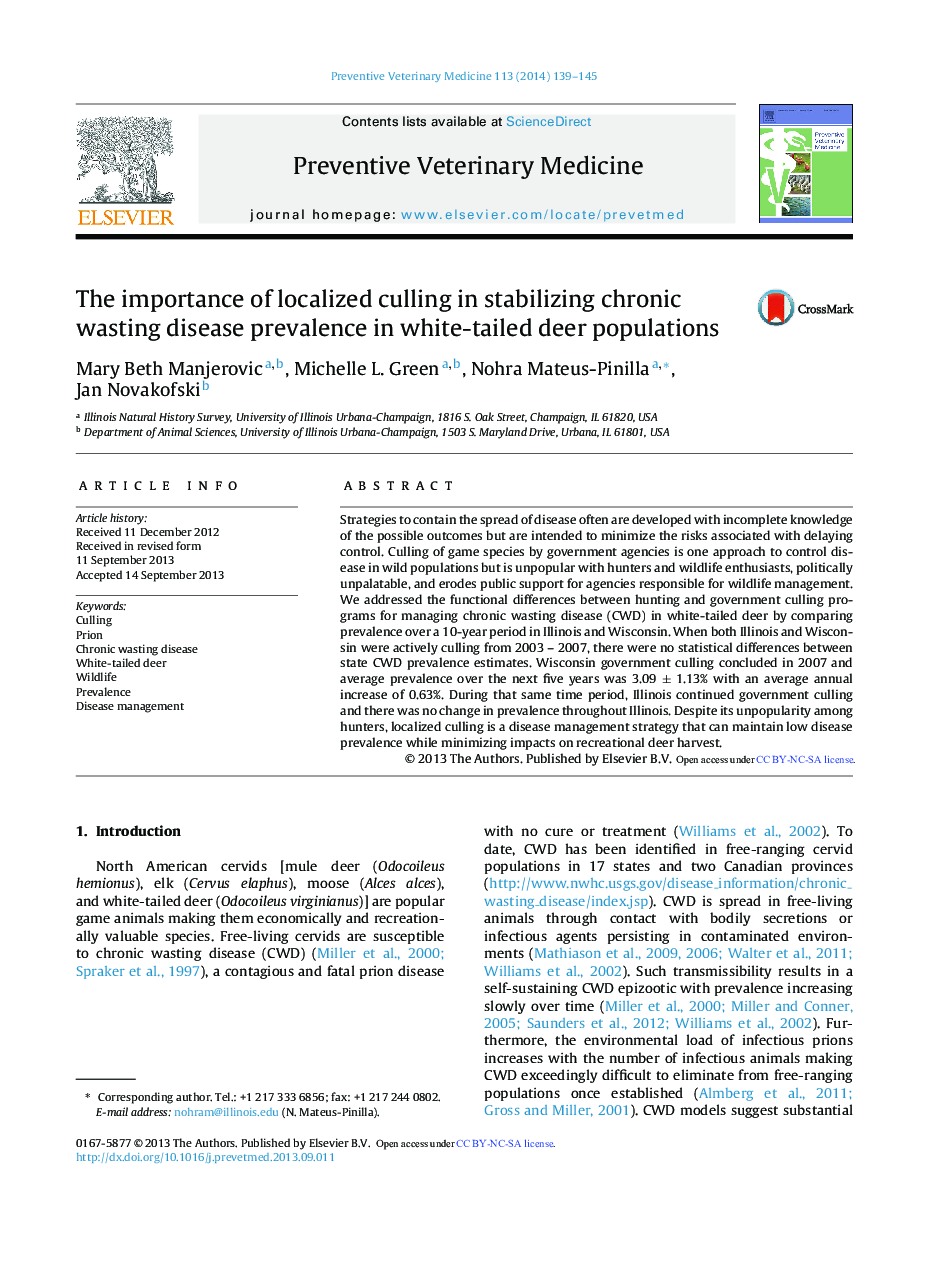| کد مقاله | کد نشریه | سال انتشار | مقاله انگلیسی | نسخه تمام متن |
|---|---|---|---|---|
| 5793334 | 1110010 | 2014 | 7 صفحه PDF | دانلود رایگان |
Strategies to contain the spread of disease often are developed with incomplete knowledge of the possible outcomes but are intended to minimize the risks associated with delaying control. Culling of game species by government agencies is one approach to control disease in wild populations but is unpopular with hunters and wildlife enthusiasts, politically unpalatable, and erodes public support for agencies responsible for wildlife management. We addressed the functional differences between hunting and government culling programs for managing chronic wasting disease (CWD) in white-tailed deer by comparing prevalence over a 10-year period in Illinois and Wisconsin. When both Illinois and Wisconsin were actively culling from 2003 - 2007, there were no statistical differences between state CWD prevalence estimates. Wisconsin government culling concluded in 2007 and average prevalence over the next five years was 3.09 ± 1.13% with an average annual increase of 0.63%. During that same time period, Illinois continued government culling and there was no change in prevalence throughout Illinois. Despite its unpopularity among hunters, localized culling is a disease management strategy that can maintain low disease prevalence while minimizing impacts on recreational deer harvest.
Journal: Preventive Veterinary Medicine - Volume 113, Issue 1, 1 January 2014, Pages 139-145
